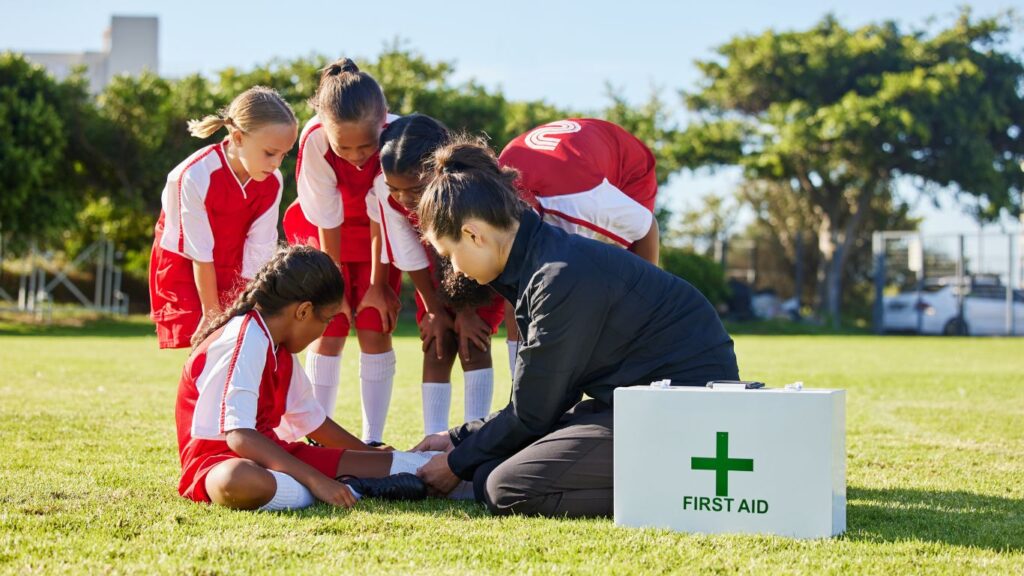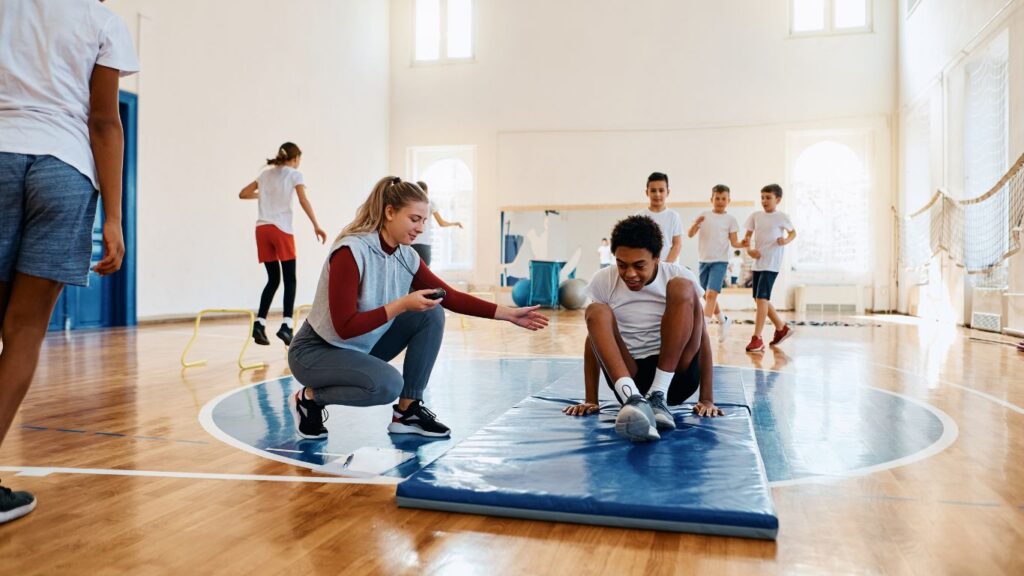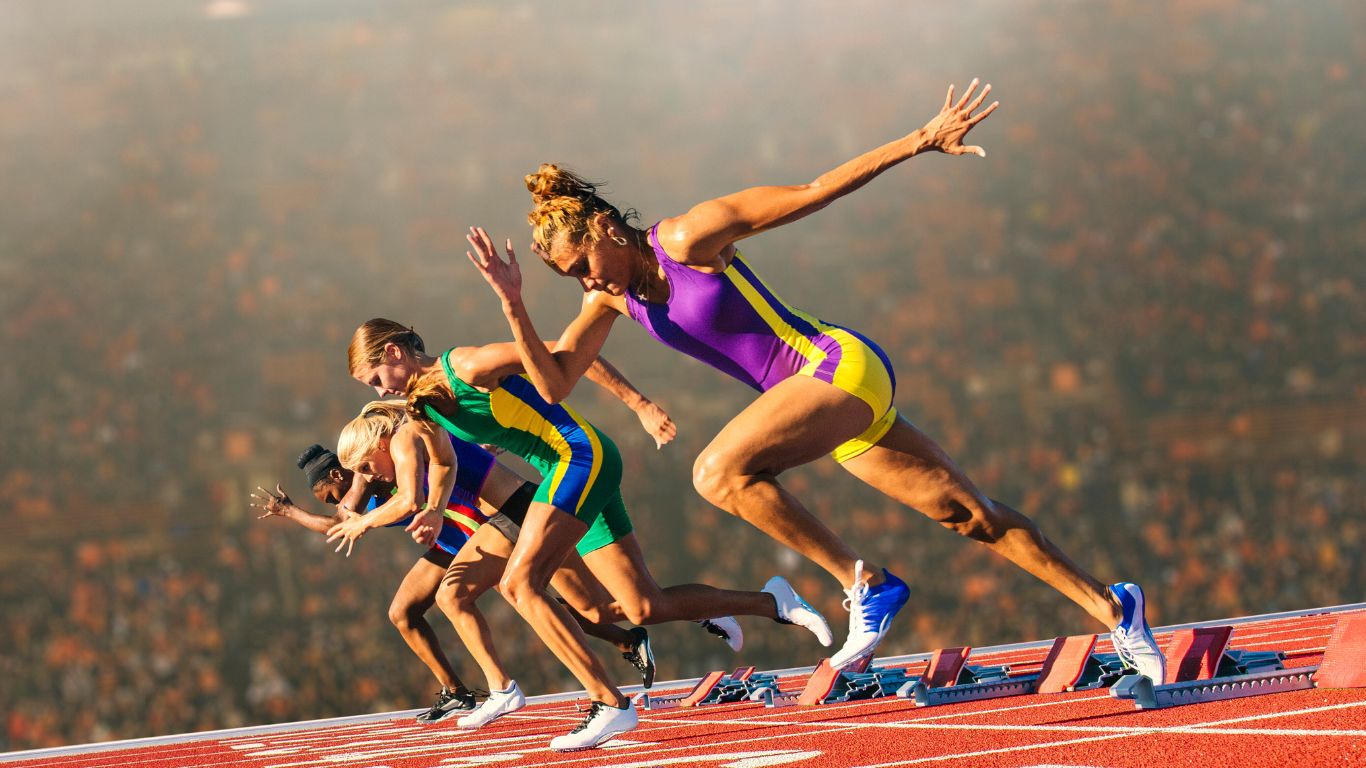Athletic trainers play a crucial role in the world of sports, ensuring that athletes perform at their best while staying safe and healthy. Whether on the field, in fitness centers, or working with sports teams, athletic trainers are essential in preventing injuries, providing emergency care, and facilitating recovery.
Role of Athletic Trainers in Sports
Athletic trainers are healthcare professionals dedicated to the well-being of athletes. They work closely with coaches, physicians, and other healthcare providers to offer comprehensive care. Their primary responsibilities span from emergency care to creating rehabilitation programs, making them indispensable in the athletic community.
Injury Prevention and Assessment
One key aspect of an athletic trainer’s job is developing and implementing injury prevention programs. These programs aim to reduce the risk of injuries by educating athletes on proper techniques, conducting fitness assessments, and designing personalized workout plans.

When injuries occur, athletic trainers are the first to evaluate and assess the situation. They determine the severity of the injury and decide the best course of action for treatment and recovery. This immediate assessment is critical in preventing further damage and ensuring a swift recovery.
Rehabilitation Techniques and Exercises
Athletic trainers are responsible for creating and overseeing rehabilitation programs tailored to each athlete’s needs. These programs include specific exercises and techniques designed to promote healing, restore strength, and improve flexibility. By closely monitoring progress, athletic trainers help athletes return to play safely and effectively.
Emergency Care and First Aid Skills
Athletic trainers are often the first responders when an athlete gets injured during a game or practice. They provide emergency care and first aid, including CPR, wound care, and injury stabilization. Their quick and decisive actions can significantly affect the outcome of an injury.
Importance of Communication with Athletes and Coaches
Athletic trainers must communicate effectively. They must clearly convey injury information, treatment plans, and progress updates to athletes, coaches, and parents. Building solid relationships and trust with athletes ensures they follow through with their rehabilitation and preventive measures.
Training and Education Requirements

To become an athletic trainer, individuals must complete a bachelor’s degree in athletic training or a related field. Many go on to earn a master’s degree for advanced knowledge and specialization. Certification through the Board of Certification for the Athletic Trainer (BOC) is also required, along with state licensure in many regions. Continuous education is vital to stay updated on the latest trends and research in sports medicine.
FAQs
What is the difference between an athletic trainer and a personal trainer?
Athletic trainers are certified healthcare professionals who specialize in preventing, diagnosing, and treating sports-related injuries. They often work with physicians and other medical staff to provide comprehensive care. Personal trainers, on the other hand, focus on developing exercise programs to improve overall fitness and health, and they do not typically have the medical training required to address sports injuries.
Do athletic trainers only work with professional athletes?
No, athletic trainers work with athletes at all levels, including high school, college, amateur, and recreational sports. They may also be employed in various settings such as hospitals, clinics, corporate wellness programs, military installations, and performing arts centers.
What kind of skills are essential for an athletic trainer?
Critical skills for athletic trainers include strong knowledge of human anatomy and physiology, excellent communication and interpersonal abilities, critical thinking, problem-solving, and the capacity to remain calm and effective in high-pressure situations. Proficiency in first aid and emergency care is also crucial.

How do athletic trainers stay updated on the latest developments in sports medicine?
Athletic trainers are required to participate in continuing education programs to maintain their certification. This can include attending workshops, seminars, and conferences, as well as staying current with research publications and trends in sports medicine.
Can athletic trainers prescribe medication?
No, athletic trainers are not authorized to prescribe medication. They can, however, recommend over-the-counter remedies and collaborate with physicians to ensure athletes receive appropriate medical care.
What is the typical day like for an athletic trainer?
A typical day for an athletic trainer can vary widely depending on their work setting. It often includes tasks such as conducting fitness and injury assessments, developing and monitoring rehabilitation programs, providing emergency care during practices or games, and coordinating with other healthcare professionals to manage athlete health and safety.
Conclusion
Athletic trainers have an incredible impact on athletes’ health and performance. Their expertise in injury prevention, emergency care, and rehabilitation is invaluable, making them essential members of any sports team or fitness center. By ensuring athletes can perform at their best while minimizing the risk of injury, athletic trainers contribute significantly to the world of sports.










